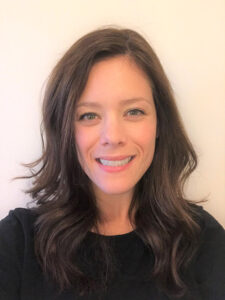When it comes to running a SaaS business, maintaining strong recurring revenue growth and a low churn rate is the name of the game. To this end, a tried-and-true method is to double down on acquiring customers that fit your ideal customer profile (ICP).
However, it can be tempting to try growing your SaaS customer base by expanding into untested market segments.
Perhaps an interested enterprise prospect comes along that has you seeing dollar signs and upmarket growth potential. Or maybe you’re considering a down-market expansion to rapidly grow your customer base. In other cases, growing SaaS businesses have a pretty mixed customer base to begin with.
It may be worthwhile to perform some cautious experimentation in this area—but be sure you can recognize when things aren’t working out.
Here are four ways you can refocus your SaaS business’ growth efforts around its ICP before your churn rate starts to climb and your monthly recurring revenue starts to sputter.
1. Adjust Your Marketing Budget for Better Leads and ROI
Different customers will have different needs, and it’s unlikely your product will be able to meet them all. As much as possible, you should be trying to get your product into the hands of just the right customers instead of all of them.
But if your marketing budget is being spent trying to target everyone, or even just one or more wrong customer segment, your sales team can be dragged into trying to close customers that aren’t the best fit for your product.
The result? A double over-spend for your business, and a likely poor return on your investment (ROI).
From late 2018 to early 2019 for example, instant messenger app Brosix tried to scale its business by attracting as many customers as possible.
As Brosix CEO Stefan Chekanov shared, the business spent more than 60% of its yearly marketing budget on expensive campaigns and quality content. However, its “one-size-fits-all” approach and “lack of focus” failed to win over many new customers.
It was clear the business needed to focus on the needs of specific customers instead. And after identifying its ideal customers, Brosix added features that appealed to them and helped the business stand out from the competition.
The efforts paid off: Brosix’s revenue grew by 5% in the first month of implementation and by almost 20% in the first trimester compared to its average profit level.
2. Work Toward Consistent Sales Cycles to Win Best-fit Customers
It’s normal for prospects to take some time to close, but you don’t want the process to take too long.
Ideally, there should be some consistency in the length of your sales cycles. If you observe certain segments of prospects taking more time and more convincing to close than others, then they might not be a good fit for your business.
And that’s not the end of the story.
Even if you manage to land the sale for some of these more time-consuming prospects, the customer might not stay on for long if they realize you can’t provide what they need. And the resulting churn can have further negative impacts on your business.
On his website, SaaS consultant Lincoln Murphy shared what happened when one of his clients took on three customers that weren’t a good fit for the business.
Those customers later canceled and began spreading the word about their poor experiences with Murphy’s client. They even talked to the client’s closest competitor, which promptly started using the information in its own sales cycles.
As potential customers lost trust in the business, its sales cycles lengthened and its customer acquisition costs went up. At the same time, its annual contract value dropped as it had to offer more concessions to close sales.
Murphy estimates that the harm done to the client lasted at least 18 months.
3. Customer Onboarding Should Quickly Lead to Success, Not Churn
When customers take too long to complete onboarding, many SaaS businesses tend to think it’s their onboarding process that needs an overhaul.
For example: “Let’s add a product tour” or “We need more tooltips!”
But could the larger problem be that you’re trying to onboard the wrong customers? If your new onboards don’t see the value in your product or if it isn’t much of an investment for them, then they likely won’t be in a hurry to use it.
Before becoming the CEO of CRM software Close.io, Steli Efti founded an open education Facebook app that bit off more than it could chew in trying to onboard enterprise clients.
In one incident, Intuit was keen to use its product—but in a way that the product hadn’t been built for. The start-up had doubts but decided to let its client have its way.
Well, onboarding turned out to be a complete flop. It consisted of Intuit sending just one email to inform its internal user base about the new product, and those users being left to figure things out on their own.
Naturally, the up-take rate was poor and Intuit abandoned the product.
Reflecting on this incident—and similar failures working with Google and Oracle—many years later, Efti wrote:
Our product hadn’t been built for clients that big, and of course they had needs we couldn’t meet. We’d sold to our non-ideal customer, and it almost killed us.”
4. Customer Success Should Focus on Fostering Long-term Recurring Revenue
Customers that aren’t the best fit for your business will likely face problems trying to get your product to meet their needs. What do they do in this situation?
They hit up your customer success and support teams to ask for help.
The more customers you have in this situation, the more time your team will need to spend addressing their queries—if they’re able to at all. This means less time for your team to handle issues from customers that are a better fit for your business, and a poorer experience for these customers as they struggle to get the support they need. Unfortunately, it could also mean an increased churn rate and a decrease in recurring revenue.
“It is strange but true that many business owners do not even know who their customers are,” writes Dwayne Charrington, a Customer Service Specialist for knowledge management software ProProfs, as he shared how businesses run into customer success issues.
Calling this a “foundational” problem, Charrington adds: “If you aim to serve everyone, you may end up serving no one.”
This isn’t to say support requests from non-ideal-fit customers should be neglected. But your customer success efforts should be proportionately distributed to ensure you’re sufficiently supporting the customers most likely to bring you the most lifetime value.
Sometimes Your Ideal Customer Profile Needs to Evolve
As you can see from the points above, targeting and working with the wrong customers can have long-ranging impacts on various teams in your business. As much as possible, most of your customers should fall within your ICP if your SaaS business is to survive—and thrive—in the long run.
That said, your ICP can change over time as your product offerings and your business evolve. And customers that were once a good fit may churn as your focus begins to shift.
With this in mind, it’s important to keep an eye on the data coming from your subscription billing platform.
- Which of your customers contribute the most to your recurring revenue? MRR? ARR?
- Which customers have been growing with your business and expanding their MRR?
- And which customers have created the longest lifetime value for your SaaS business?
The data doesn’t lie, and it helps determine whether the customers bringing in the most revenue over the long term are still aligned with what you think is your ICP. If there’s a mismatch, your ICP might need some tweaking.
Any resulting changes to your ICP must be well communicated to your teams. This way, they can fine-tune their strategies and processes and continue growing your business in the right direction.








